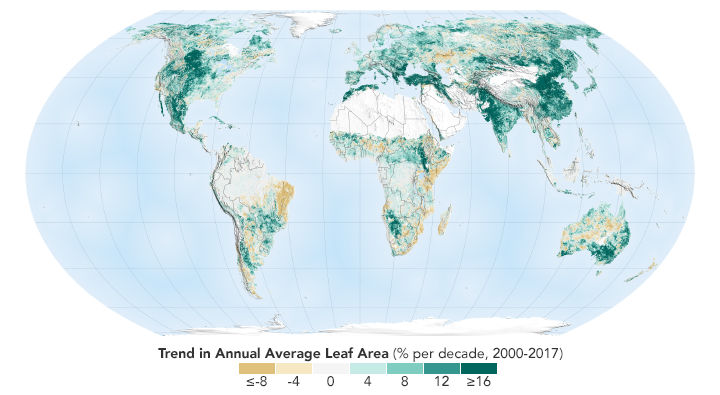India, China lead global greening effort: NASA
The greening in China is from forests (42%) and croplands (32%), but in India it is mostly from croplands (82%) with minor contribution from forests (4.4%)
A new NASA study shows that China and India, are leading the increase in greening on land. The effect comes mostly from ambitious tree-planting programs in China and intensive agriculture in both countries.
The study published on February 11, in the journal Nature Sustainability (go.nature.com/2Gve6Ho) said that satellite data (2000 – 2017) revealed a greening pattern strikingly prominent in China and India and overlapping with croplands worldwide.
This study was made possible thanks to a two-decade-long data record from the Moderate Resolution Imaging Spectroradiometer (MODIS) instruments on NASA’s Terra and Aqua satellites. An advantage of MODIS is the intensive coverage they provide in space and time: the sensors have captured up to four shots of nearly every place on Earth, every day, for the past 20 years.

China alone accounts for 25% of the global net increase in leaf area with only 6.6% of global vegetated area.
Food production in China and India has increased by over 35 per cent since 2000 mostly owing to an increase in the harvested area through multiple cropping facilitated by fertiliser use and surface and/or groundwater irrigation.

According to the paper, the greening trend may change in the future depends on numerous factors. For example, increased food production in India is facilitated by groundwater irrigation. If the groundwater is depleted, this trend may change.
The researchers also pointed out that the gain in greenness around the world does not necessarily offset the loss of natural vegetation in tropical regions such as Brazil and Indonesia.
There are consequences for sustainability and biodiversity in those ecosystems beyond the simple greenness of the landscape.




